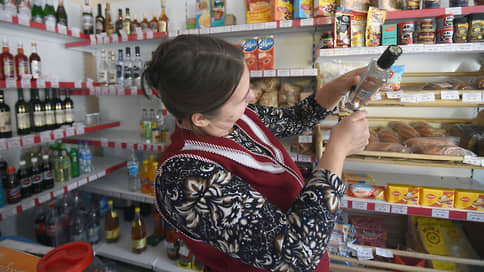Opinion | Social coherence is crucial in increasingly extreme weather
/s3/static.nrc.nl/images/gn4/stripped/data132608305-d13032.jpg|https://images.nrc.nl/a7qunwvmw9uTBH0__HIuksj2e5o=/1920x/filters:no_upscale()/s3/static.nrc.nl/images/gn4/stripped/data132608305-d13032.jpg|https://images.nrc.nl/Bl-Z8DVjKul-t8NNw3QQVfpFfAU=/5760x/filters:no_upscale()/s3/static.nrc.nl/images/gn4/stripped/data132608305-d13032.jpg)
Dry and sunny. That is the weather in large parts of the Netherlands since February this year. This persistent drought has serious social consequences. For example, various advisory councils already warned of drinking water shortages. Drought also increases the chance of other problems. Think of natural fires, falling groundwater level and harvesting that fail.
Climate change has different faces. In addition to drought, we also have to deal with heat and precipitation more and more often, longer and intensify. Moreover, the sea level continues to rise. These consequences increase the risk of extreme heat, a natural fire or a flood, but also to creeping calamities such as foundation damage caused by soil drying.
Especially in the field of water safety, the Netherlands has a tradition of decisiveness that is followed everywhere in the world. With all kinds of technical measures – such as dikes, flood defenses and ground – we manage to keep the water out. Most Dutch people believe that they continue to keep dry feet. In this respect there is great confidence in the Dutch government.
Climate events
Unfortunately, the often technology -based adaptation measures can never offer sufficient protection. The speed, unpredictability and intensity of climate events is great. The risk of damage and victims is increasing. Moreover, the focus on water safety can attract attention from, for example, the consequences of drought and heat.
The awareness is growing that climate change will also draw traces in society. After all, extreme weather has the same effect on how people live together. In addition, some are more vulnerable to climate change than others. « The poorest neighborhood is the hottest neighborhood, » it is called in the media. Heat is especially a problem for residents of poor neighborhoods and much less for those who live in richer, often leafy neighborhoods. These differences in vulnerability and recovery capacity affect the coherence within society.
Read also
You are not more unsafe in Dordrecht than anywhere in the Netherlands. But here they do know what to do if things go wrong ‘
That is why it is important that the governments – from municipality to Rijk, and from province to water board – take the social consequences of climate change and adaptation policy more and better into account. We argue this in the new report of the Scientific Council for Government Policy (WRR) Human and climate. The power of social infrastructure in adaptation. More specifically, we argue for adaptation policy to also take into account social factors such as perception of threats, social cohesion and socio-economic position.
Scientific literature shows that social circumstances are an important predictor of the seriousness with which people are hit by disasters. For example, households with less financial resources are hit on average more often and harder due to climate change. Their starting position is simply worse. They often live in a petrified environment with little greenery and have few resources for protective measures. They also recover more slowly, for example because they have no money to repair the property.
In the event of dangerous weather, the sense of community appears to offer protection to vulnerable people. That message sounds clear from the book Heat Wave From the American sociologist Erik Klinenberg about the Hittegolf of 1995 in Chicago. More than seven hundred people then died due to heat stress. Klinenberg compares the interaction with extreme heat in two poor neighborhoods. In one neighborhood, social services such as neighborhood shops and churches had disappeared; They still existed in the other neighborhood. The difference between the neighborhoods was great. Residents had more contact with each other in the neighborhood with social services. They kept an eye on things and knew who might need extra help. The excess mortality was limited here. The facilities disappeared in the other neighborhood, and with that the mutual connection disappeared. As a result, people died more often unnoticed and alone.
People who live isolated are more often victims and scribble up slower after a disaster
Klinenberg’s research shows that social coherence is a powerful weapon: it lowers the threshold to request or offer help, precisely when it really matters. Similar analyzes about Hurricane Katrina (New Orleans, 2005) and the consequences of the European Heat wave in Paris (2003) also show that community spirit makes a difference. People who live isolated are more often victims and scribble up slower after a disaster.
The examples mentioned bring a confrontational reality: the neglect of social factors has far -reaching consequences for society. If vulnerable groups are hit harder and not being able to raise claims, it has consequences for the way they view themselves, the government and others. People can face each other, their trust in the government is crumbling and socio -economic differences are increasing.
Repair costs
Back to today’s drought. What are the social consequences of long -term drought? An example from many. Drought leads to low groundwater levels and subsidence. Especially with somewhat older houses, built on wooden posts and soft soil, foundation damage therefore occurs. The cause of subsidence is not with the homeowners, but they do pay for the costs. Repair costs can amount to a ton. For some households, such an investment is feasible, for others an insurmountable threshold. This can mean that a household has to sell the property without financial reserves – probably with a loss.
Reports about foundation damage are increasing. Calculations of the Council for Living Environment and Infrastructure show that in 2035, four hundred thousand buildings may have to contend with foundation problems. How we deal with this problem in the Netherlands has not yet crystallized. It is clear that we will in any case also have to pay attention to social factors.
Taking into account social factors in adaptation policy increases social resilience and climate resistance. It reduces climate vulnerability of certain groups, because they are better able to do what they have to do. Moreover, it also helps against greater differences in society and against decreasing trust in each other and the government.
To promote that social resilience, the WRR advises to invest in social infrastructure. Think of the physical places where people meet and get to know each other, where they can get reliable information from, or where social initiatives can develop. This allows trust to grow and the sense of community in its wake.
They also offer a starting point for assistance at the time of emergency. Think of water taps If the drinking water supply unexpectedly stops in a neighborhood, cooling spots for local residents at a heat wave or a dry place during flooding. Such places – from library to school, and from clubhouse to playing field – there are already many, but not yet everywhere.
Involving social factors in climate adaptation does not happen from one day to the next
The WRR advice is in line with the recent commitment of Minister Van Weel (Justice and Security, VVD) to withdraw millions For emergency support points in every neighborhood To increase resilience. It is essential that these points also function well in everyday situations and not only in times of need. After all: then residents can fall back on the network that they have built up over the years. It is therefore important that these places are attractive, so that people like to come and keep returning.
Involving social factors in climate adaptation does not happen overnight. It is essential that there is an understanding for the domain of engineers on the one hand and on the other hand of experts on sociological level. The Netherlands has a wonderful knowledge base and enjoys a lot of faith in the field of water safety. The focus on water protection measures remains important, but must be widened. So use this strong starting position to bridge the bridge in climate adaptation to the social impact of extreme weather.

:format(webp)/s3/static.nrc.nl/wp-content/uploads/2025/03/25142012/data129899652-468f79.jpg)
/s3/static.nrc.nl/wp-content/uploads/2025/05/22061231/WASHINGTON-SHOOTING-ISRAEL_68025076.jpg)
/s3/static.nrc.nl/images/gn4/data132605571-45d4a8.jpg)
:format(webp)/s3/static.nrc.nl/wp-content/uploads/2025/03/06185419/0503BIN-SouvereinVolledigRGB.jpg)



